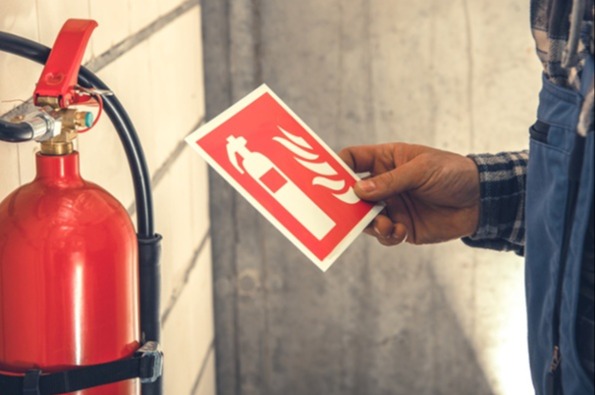Fire Readiness:
An Introduction
Ensuring your business is fire-ready can be quite a daunting task. There are a huge number of factors to consider, and it’s easy to forget crucial points that can have a big impact on both your business’ ability to survive a fire, and the odds of one occurring in the first place.
That’s why we’ve created this guide, to act as the perfect starting point for all your fire readiness concerns. We’ve structured it as a series of questions to ask yourself, in order to determine if your workplace is truly ready, in the terrible event that a fire does break out.
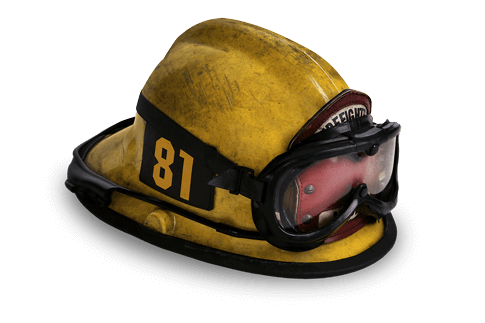
The Ultimate Fire Readiness Guide
In this guide, we’ll explore the various points you should consider when ensuring your commercial environment is protected against fires, and the impact they can have on your business if under prepared.
According to HSE World, a near miss is a leading indicator of a future serious incident. A near miss is, after all, simply a serious incident that was only narrowly avoided due to circumstance or quick thinking. It's a demonstration that all the pieces are in place for a major accident to occur, if the circumstances are right.
If no substantial changes are made following a near miss or minor fire, all the pieces are in place for the same thing to happen again. A near miss is a sign that changes need to be made, and those that ignore it should not be surprised if a serious incident occurs in the near future.
A near miss can also be a learning experience. If you overlooked the hazards that almost caused catastrophe, you can now look at your next risk assessment with fresh eyes.
Even without a near miss, it’s recommended that you review your fire risk assessment every year, with the aid of a professional, and to entirely redo them every four years, or three years for properties over 3 stories tall.
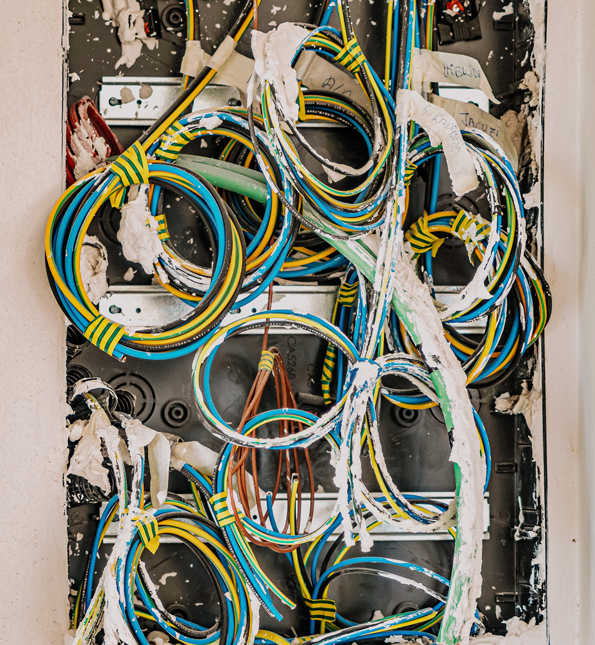
(Ask Yourself) Common Hazards
When was your last PAT test? If you are in an older building, how recently was your electrical wiring tested?
Regular PAT testing helps identify any potential faults or defects in electrical equipment that could pose a safety hazard. Faulty or damaged equipment can lead to electrical shocks, fires, or other accidents. By having your appliances tested, you can minimise the risk of electrical accidents and ensure the safety of individuals using the equipment.
33% of accidental fires in the UK are caused by electrical faults, along with 15% of domestic fires in England and Wales.
When was your heating system last serviced? If your heating system was to cause a fire, how might this happen?
Heating systems are responsible for around 3% of residential fires, but 11% of fire deaths in the UK.
One of the most common ways for a fire to start is for flammable materials to be left too close to a heater. In addition, vents and flues can become blocked over time, causing systems to overheat.
Blocked vents can also cause carbon monoxide to be generated and leaked into the building.
Would you know if there was an excess level of carbon monoxide in your environment?
As it is odourless and causes drowsiness, carbon monoxide can be lethal because it is impossible to detect at low concentrations and hard to escape at higher concentrations. 100-200 people in the UK die from carbon monoxide poisoning every year. Installing carbon monoxide detectors in areas where you have older heaters can save lives.
Does your kitchen use an induction hob or gas/heating element? Do your kitchen areas have flammable items stored properly?
At least 10% of business fires start in kitchen areas. Ensuring your cooking equipment is serviced regularly lowers the risk of fires caused by gas leaks or faulty heating elements.
Additionally, keeping flammable materials like oil away from sources of ignition reduces the chance of accidental fires.
If an oil fire broke out, how would you tackle it? What extinguisher would you deploy?
In industries where oil fires are common, it is vital staff are well-versed in dealing with them, as if they are tackled incorrectly, they can be accelerated rather than suppressed.
An oil fire should be dealt with by smothering it with a fire blanket (or by placing the lid back on the pot containing the burning oil).
Alternatively, wet chemical fire extinguishers are specifically designed to deal with cooking fat, oil and grease fires.
Are all flammable materials stored in areas well away from ignition sources?
Between 2010 and 2020, around 14% of workplace fires in the UK were caused by flammable materials being placed too close to sources of ignition. Workplaces that fell victim to this more frequently than others were workshops, where sparks or materials heated by friction ignited combustible items.
Would you consider locating all dangerous materials in one fire safe room/environment with early detection apparatus?
Placing flammable materials in a fire safe room can serve a dual purpose. Firstly, if the materials are ignited, the fire resistance of the room will provide plenty of time for staff to evacuate the building. Secondly, if a fire starts elsewhere, these materials will not be easily available to accelerate the fire, and the scale of the damage may be limited.
With early detection apparatus, such as a VESDA system, the chemicals emitted before ignition can be identified, and a warning can be sounded. This either gives an opportunity for the fire to be nipped in the bud, or provides ample warning for the building to be evacuated safely.
More than one in five fires are caused by arson, and arson is responsible for around 50% of all fires attended by the emergency services. In 2017/18, arson was estimated to be responsible for damage worth £5.73bn - £11.46bn.
It can be hard to stop a fire caused by arson once it has started, but they can be prevented in the first place with effective security measures.
What security measures do you have in place to prevent unauthorised access?
Limiting access to your premises to only authorised individuals greatly reduces the risk of bad actors committing crimes that could harm your business. Among the crimes prevented, arson is probably the most devastating, and it will have the longest recovery time.
However, it’s worth noting that this will not entirely eliminate the risk of arson. Though that statistic is likely outdated, a study performed by the Arson Prevention Bureau in 2003 found that a significant number of workplace arson attacks were committed by employees.
If arson was committed, could you easily identify the perpetrator from your CCTV footage?
With many older CCTV systems, it is a slow and laborious process to track back through footage and find an incident. Even more frustrating is locating an incident, only to find the footage is of insufficient quality to identify the perpetrator.
For instance, with an older CCTV system, positive ID may be difficult, as the footage may be too low quality, or the light levels too low for a face to be easily discerned. This could be devastating, both for your ability to achieve justice, and for your business, financially.
This is because positive ID will be a major factor in the successful prosecution of an arsonist, as well as for securing an insurance payout. An insurance company will be reluctant to pay if there is a possibility that the arsonist has any connection to the business owner.
If you’d like to learn more about how you can use more modern CCTV systems to improve your workplace security, click here.
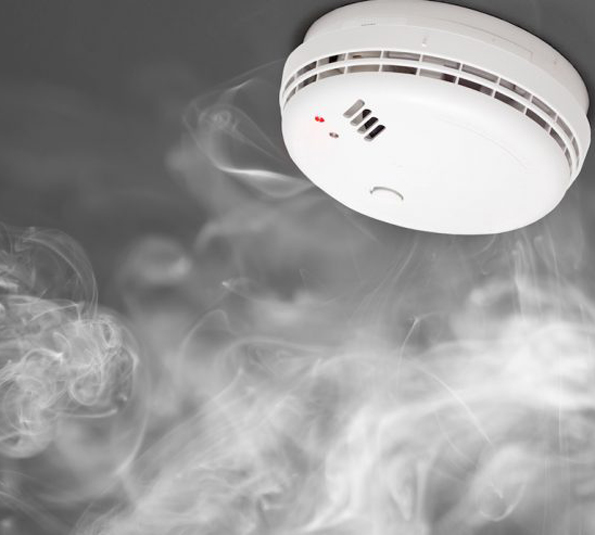
The form of fire detection system used can make a big difference to your intervention and evacuation times.
Most workplaces use basic smoke detector-based fire alarm systems. While these may be sufficient for many environments, there are several drawbacks which may make a standard smoke detector system a poor choice:(Ask Yourself) Minimising the Impact
Can your fire detection system identify electrical fires, especially in the early stages?
VESDA systems can be adjusted to detect the byproducts of an electrical system overheating. This makes them an excellent choice for locations such as server farms. By detecting an electrical fire in its earliest stages, you are given plenty of time to respond, so damage can be minimised to a single drive, as opposed to your entire server setup being destroyed, which many businesses could not recover from.
With early detection, such as a VESDA system, the chemicals emitted before ignition can be identified, and an alarm can be triggered. This either gives an opportunity for the fire to be nipped in the bud, or provides ample warning, so the building can be evacuated safely.
This can be combined with 24/7 fire alarm monitoring, to ensure that the response to any alarm is as swift as possible, whether your premises are occupied or not.
Is your fire suppression system appropriate for your business and its important assets?
Some businesses may have assets that are vital to their function which could be damaged or destroyed by a conventional, water-based fire suppression system. Obvious examples of this would be electronic systems like computers and servers, electrical machinery, or paper documents. The water in a fire suppression system has often been there for a long time as well, and typically taken on a black colour, from corrosion in the pipes in which it's stored. For items vulnerable to staining, such as art, books or historical artefacts, a water suppression system could be just as damaging as a fire.
There are also situations where gas or chemical systems would be ill-advised. Laboratories, clean rooms and pharmaceutical manufacturing facilities often have strict controls in place to maintain temperature, humidity and cleanliness at a particular level. These could be disrupted by the release of a chemical fire suppressant, even if it’s comparatively inert, compromising ongoing operations or delicate processes.
Some suppression systems use CO2 to put out fires, and while this is not an obvious threat to any physical items, it has the capacity to damage your business’ most important asset - its employees. A CO2 system will rapidly fill a room, displacing the oxygen necessary for human life to continue. For this reason, a CO2 fire suppression system should never be installed in an area with human occupants, or those holding animals either, such as pet shops or stables.
If you’re looking for a fire suppression system, but are uncertain as to what would be the best choice, feel free to get in touch. We’d be happy to help you find a system that’s perfect for your workplace.
When were your fire extinguishers last serviced? Who were they serviced by and were they fully qualified to do so?
Fire extinguishers need regular maintenance to ensure proper function is maintained. Allowing your fire extinguishers to go too long without servicing risks them malfunctioning when needed most.
Firstly, an extinguisher that hasn’t been serviced recently may be low on pressure or completely discharged, so it will be ineffectual or useless in a fire.
Second, the extinguisher may be damaged or corroded, which can cause leaks or malfunctions. A damaged extinguisher may not work as intended, and could even cause injury if it ruptures or explodes.
Third, the extinguisher may have expired or reached the end of its service life. Fire extinguishers have a limited lifespan and must be replaced or recharged after a certain period of time.
Extinguishers even need to be serviced when first installed as they may lose pressure or receive damage while in transportation.
Are all your staff confident with the use of different fire extinguishers (Foam, CO2, Dry Powder, etc)? Do they know when each type should and should not be used?
The following chart explains the types of fire that each extinguisher is best suited to:
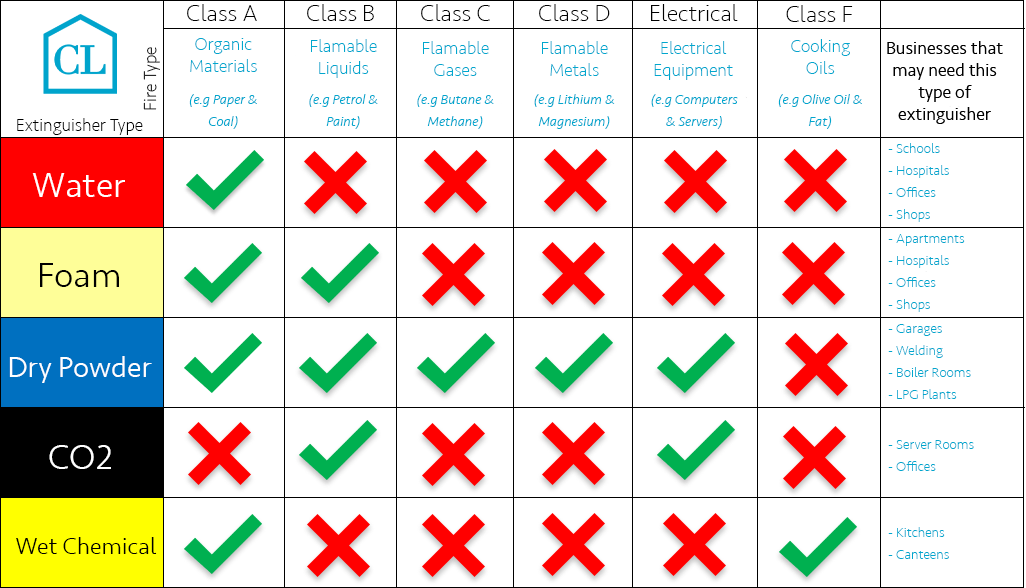
For further details on the types of fire extinguisher, and their uses, check out our blog, "The Types of Fire Extinguisher and How to Use Them".
Who of your staff is likely to be the least confident in using a fire extinguisher? Would you feel comfortable if they were the first on the scene of a fire? If not, what are you doing to improve this?
You can never guarantee who will arrive at the scene of a fire first, and those first few seconds can be crucial. For this reason, your staff should be properly trained in the correct use of all extinguishers your workplace holds. An employee who is not confident in the use of a fire extinguisher may:
- Hesitate, giving the fire time to spread further.
- Use the extinguisher in an ineffective manner. In the best case scenario, this just leads to the fire being extinguished more slowly than needed. More likely is that they fail to extinguish the fire entirely, or even spread it further.
- Use the wrong fire extinguisher, potentially exacerbating the fire.
- Injure themselves. Holding the horn of a CO2 extinguisher can cause ice burns, the powder from powder extinguishers can irritate and damage lungs, and extinguisher chemicals can be toxic.
VESDA
Our recommended detection system would be a Very Early Smoke Detection Apparatus (VESDA). VESDA has many advantages over more conventional smoke detectors, including:
- Earlier Detection - VESDA systems are highly sensitive and can detect smoke particles at very low concentrations, even before they are visible to the human eye! Detecting smoke (or even the compounds released before a fire ignites fully) early gives more time for intervention and response, minimising potential damage, injuries, and disruption of business.
- Greater Sensitivity and Wider Coverage - VESDA systems utilise advanced air sampling technology to continuously draw air samples from various locations. This allows for broader coverage, particularly in larger or more complex spaces. The system can monitor multiple sampling points at once, increasing the chances of detecting smoke at its earliest stages and identifying the exact location of the potential fire.
- Adjustable Sensitivity - VESDA systems offer adjustable sensitivity settings, and can be customised to suit their specific environment. This flexibility means the system can adapt to different workplace conditions, such as areas with high levels of dust, humidity, or airflow, minimising false alarms.
Being able to evacuate your building quickly and safely is crucial for preserving life.
If your evacuation times are poor, you are placing your staff at risk and also (from a purely practical standpoint) limiting your building's maximum occupancy.
A building’s maximum occupancy is limited by how many people can be evacuated in a safe period of time. For instance, even if you have an enormous building, if there is only a single exit, your maximum occupancy will be capped at 60 people.
As a rule, your maximum occupancy (provided you have enough emergency exits) is the floorspace in m2 of your occupied rooms divided by:
- 1 for a dining area
- 2 for a shop
- 5 for a display, production or workshop area
- 6 for an office
- 7 for a shop that sells bulky goods.
For more information, including the impact of your exit sizes and routes, and your evacuation times on your maximum occupancy, click here.
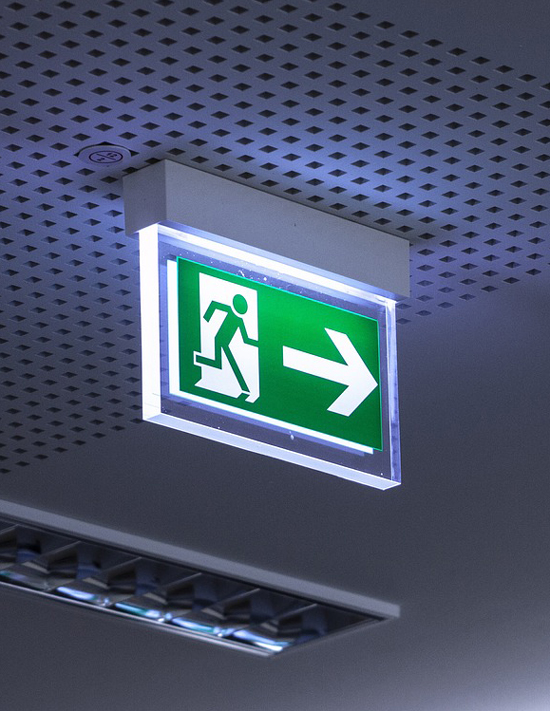
(Ask Yourself) Minimising the Impact
How quickly can your building be evacuated? Do you have sufficient escape routes for your staff numbers?
There are no specific evacuation times prescribed by law. Instead it says that “in the event of danger, it must be possible for persons to evacuate the premises as quickly and as safely as possible”.
What “quickly” is will differ from building to building. The main aim is for your Required Safe Escape Time (RSET) to be considerably shorter than your Available Safe Escape Time (ASET).
Your RSET is the time available between ignition and occupants in a specified location reaching a safe place.
Your ASET is the time available between ignition and conditions becoming untenable.
Where on your premises would be most difficult to evacuate from? What could you do to improve evacuation times from this location?
By identifying the rooms that would be hard to evacuate quickly, businesses can take steps to improve their evacuation times.
This could include regular fire drills to familiarise the room’s occupants with their evacuation procedures, early warning alarms to prompt an evacuation before a fire can spread quickly, or rearranging doorways (if possible) to provide faster routes to the building’s emergency exits.
Are your fire exits easy to open? Is this tested regularly? Are your escape routes clear of obstructions (including any flammable materials)?
Any obstructions on an escape route, such as doors that are hard to open, can cause dangerous delays to evacuations. If your building is close to occupation capacity, evacuation times may become dangerously long, risking injuries or even deaths.
Flammable materials stored near fire exits or on escape routes can entirely prevent escape. This can cause crushes or stampedes as evacuees are forced to find an alternate exit.
Would staff be able to find their way out if a fire caused a power cut? Do you have sufficient emergency lighting and signage?
Illuminated signs can save lives in a fire, as smoke can quickly fill a building, making it difficult to see and navigate. In such situations, it can be easy for people to become disoriented and lose their way, leading to injuries or even fatalities.
Illuminated signs act as a clear guide for people to follow safely. They are designed to be highly visible, even in dim or smoky conditions. Seeing the signs can also help people feel less panicked, which is especially important in high-stress situations.
Would a visitor be able to find their way out in a fire? Are your visitors briefed on appropriate exits when they first arrive?
Finding your way out of an unfamiliar building can be difficult at the best of times, depending on the layout.
In an emergency, such as a fire, people are liable to panic. This makes it especially easy to get confused when looking for an exit. In addition, the entrance they used may not be an emergency exit, or the route they took may now be blocked by fire.
Briefing visitors on the nearest emergency exits can save both the life of the visitor, and potentially that of a firefighter sent in to find them if the visitor was unable to evacuate.
Do you have fire notices in prominent locations, detailing the actions to take in a fire?
Fire notices in prominent locations are more visible to building occupants. This means people are more likely to see them and learn important fire safety information, like evacuation routes, extinguisher locations, and fire alarm procedures.
They can also improve awareness of fire safety issues among occupants, helping prevent fires occurring in the first place.
In addition, prominent notices can satisfy an employer's legal obligations to ensure employees are well equipped to safely fight fires, or evacuate quickly.
Do you have a Personal Emergency Evacuation Plan (PEEP) for disabled occupants?
While many disabled people will be able to evacuate in a timely manner with other building occupants, some will need Personalised Emergency Evacuation Plans to ensure their safety.
This plan will consider their disability, other related requirements, where they are within the building, and their best evacuation route.
Do any of your staff have impaired hearing and/or sight? How would they be alerted?
Traditional audible alerts may be less effective for employees with impaired hearing, or those who are totally deaf. The usual solution is to use alarm systems that also have flashing lights, though depending on the frequency of the flashes, these may not be sufficient for those who also have poor vision.
In this instance, strobe lights may be more effective, though they will of course pose risks for other employees who may have light-sensitive epilepsy.
Another alternative is tactile or vibrating alarms that are worn by these employees as a wristband or pendant. In the event of a fire alarm, these devices will vibrate and alert the wearer to the emergency.
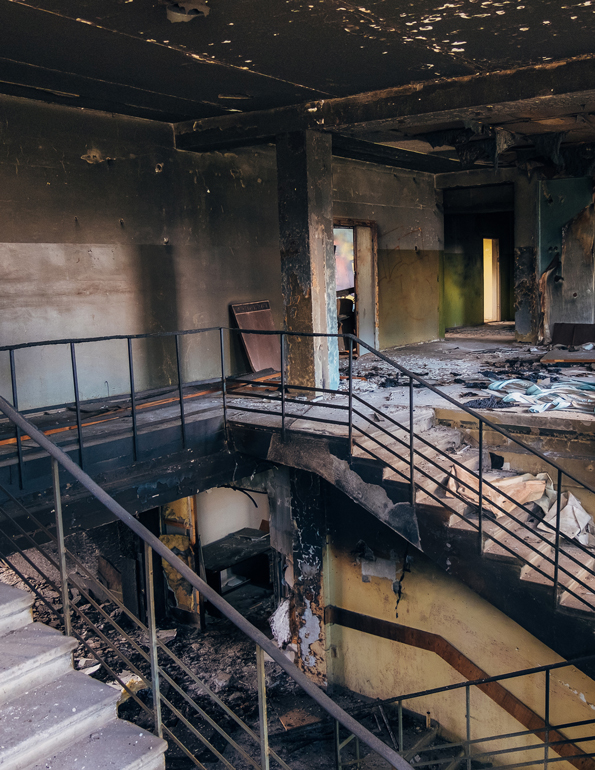
Up to 80% of businesses in the UK fail within 18 months of a fire.
Much of the time, these failures are not due to the direct damage caused by the fire, which will be covered by insurance. Instead, they’re due to a business being unable to operate and generate income in the immediate aftermath of a fire.
A company that doesn't restart operations within a month of a fire has a 80% chance of failure.
Improving your recovery times can be the difference between a major fire being a serious inconvenience, or a lethal blow to your business.
Some steps you can take as a business to improve your recovery times include:
(Ask Yourself) Business Survival
If servers or other items your business relies on to operate were destroyed could you still operate? Do you have items insured and data backed up in the cloud?
While your insurance will likely cover the monetary cost of the items lost in a business fire, what won’t be compensated is the loss of income, or potential contracts voided due to your inability to fulfil them.
For instance, if your servers were destroyed in a fire, while you may (eventually) receive a payout, all the data stored on them will be lost if it isn’t backed up in the cloud or at a separate location. This can be absolutely crippling for your business.
The same could be said of important manufacturing equipment, or valuable stock. While there may be a payout to cover their loss, the pause in business may create a gap in your revenue stream.
By storing important stock like this in a fire-resistant room, you ensure that your business can continue operating, even while your premises are unusable.
How quickly could you get 80% of your business back up and running after a fire?
Ensuring your business can continue running, even at a reduced capacity, is crucial, as it means the pause in your revenue stream will be as small as possible. This is important as, even while you aren’t making money, your business will still be incurring costs. Pay, rent, utility bills and materials costs will still be coming out of your company’s accounts, and with no revenue stream, you could very quickly find yourself in the red. This is not to mention the cost of replacing the items destroyed in the fire.
On top of this, the longer you are out of action, more customers will go to other businesses to have their needs met. Your market share will shrink, and your income may be insufficient to keep up with your costs once you are operating again.
Finally, by ensuring your revenue stream is restarted sooner, you can speed your recovery. By diverting profits to the rebuilding/restoration of your workplace, including getting that remaining 20% of your business back on its feet, you can bring your income back to full strength faster and limit the long-term impact of the fire on your business.
The duty of ensuring appropriate fire safety measures are in place falls on the "Responsible Person".
By default, this person will be the employer, unless someone else is appointed specifically. The duties of the Responsible Person are defined under the Regulatory Reform (Fire Safety) Order 2005, which applies to England and Wales. Similar legislation exists in Scotland and Northern Ireland. According to the Order, the Responsible Person is in charge of implementing fire safety measures and ensuring compliance within the premises. This includes taking actions to prevent fires, protect occupant safety, and minimise the risks associated with fire.

Some Notable Duties Involved Are:
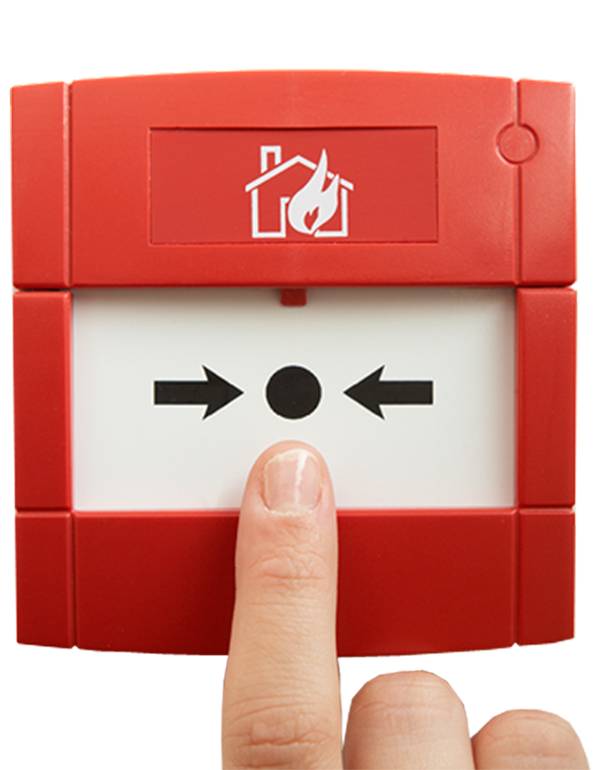
In the event of a fire, failure to fulfil any of these duties can lead to legal consequences, including enforcement action, fines, or even imprisonment.
This can even apply outside of office hours. Over 57% of fires that aren’t accidental dwelling fires occur between 6pm and 8am - outside of office hours, when most workplaces will be empty.
It only takes 30 seconds for a fire to spread exponentially. If there is no one around to dial 999, a fire can quickly engulf your business, and even destroy those of your neighbours.
Many sites will have their fire alarm system set up to automatically contact the fire brigade if an alert is triggered. However, with older systems, this can cause problems. False alarms from automatic systems are responsible for 46% of fire brigade callouts, and smoke detector-based systems are far more prone to sounding an alert with no fire to respond to.
Many fire services now charge for their time responding to these false alarms. In 2014, London Fire and Emergency Planning Authority started charging for every false alarm beyond the 10th in a year, and other services have instituted this as well.
Two alternatives here would be a more up-to-date detector system, like VESDA, or third party fire alarm monitoring.
With its ability to be adjusted to ignore non-smoke particles (such as water vapour, dust, cooking smoke and humidity), a VESDA minimises the risk of false alarms.
More than that, because a VESDA can detect smoke at far lower concentrations, it can send out an alert far earlier, so when the fire brigade arrive, less damage will have been done.
With a monitored fire alarm system, your alert will be sent to an Alarm Receiving Centre (ARC), who can investigate remotely to ascertain whether it is a genuine emergency or not. This removes the risk of wasting the emergency services’ time, and the ARC can deactivate false alarms remotely before arranging for a technician to attend the next day to service your alarm system.
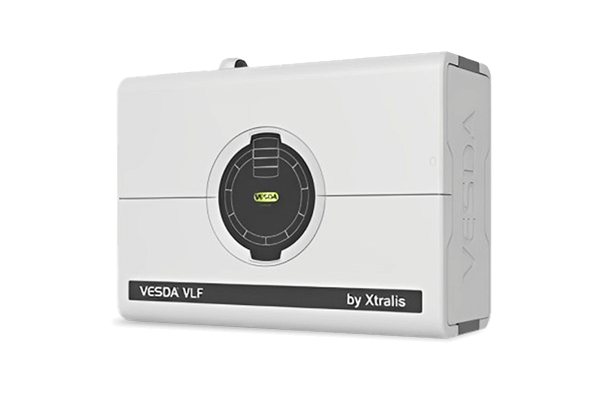
Conclusion
There are a huge number of factors to consider when ensuring your business is fire-ready. Hopefully, this guide will have, in some way, helped to inform you about the potential risks involved in neglecting areas of fire safety, as well as making you aware of ways you can make your business more protected against the causes and consequences of workplace fires.
At Chris Lewis, we have been at the forefront of fire and security installations for over 30 years. We have installed state of the art fire detection and suppression systems in businesses across the country, as well as homes, schools and listed buildings. If you would like to discuss installing any of the systems we have discussed in this article, simply fill in the form below and we will be in touch.
